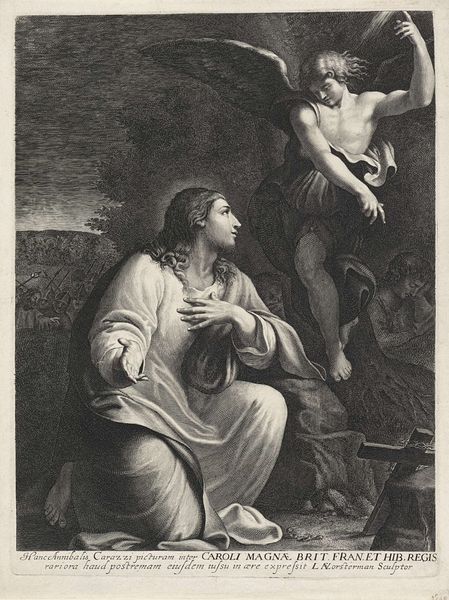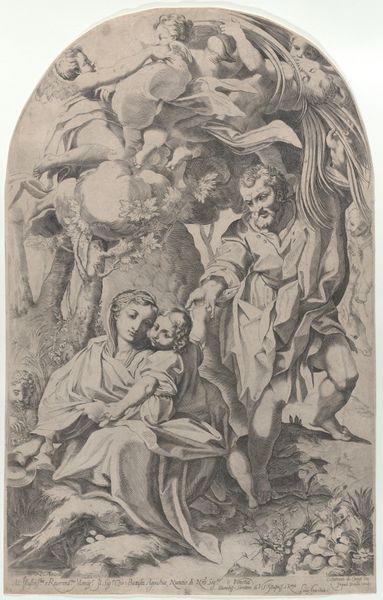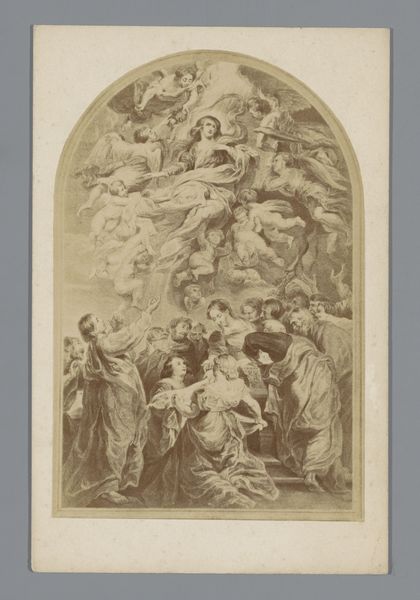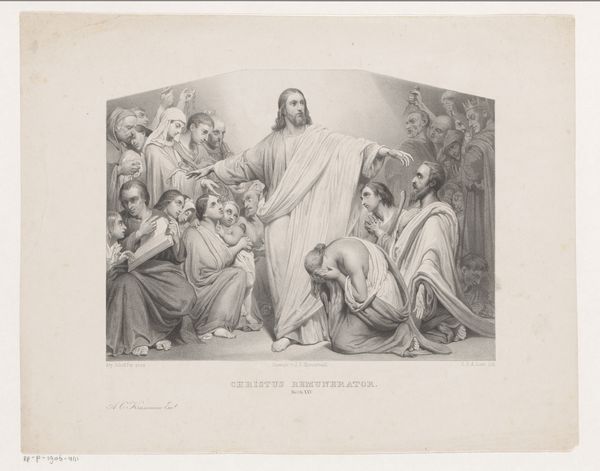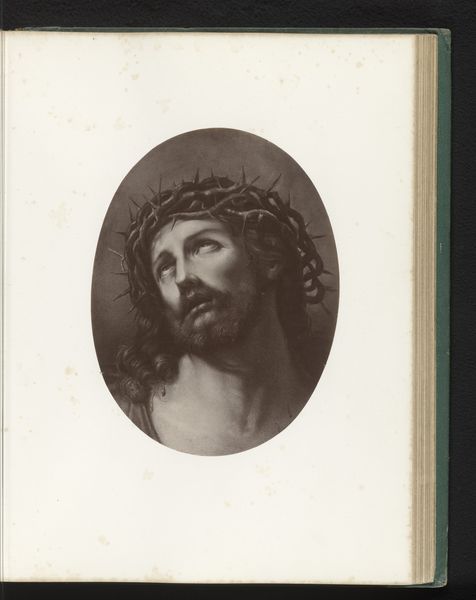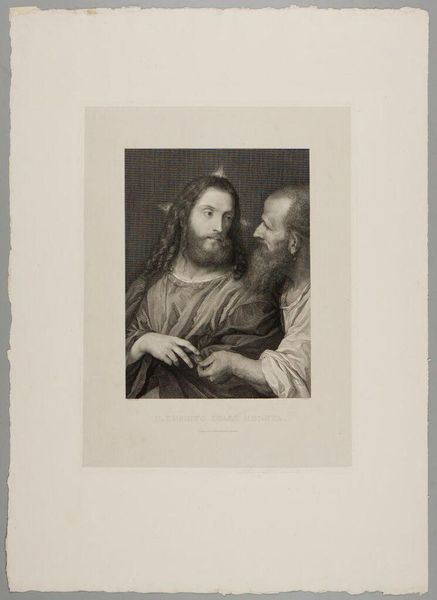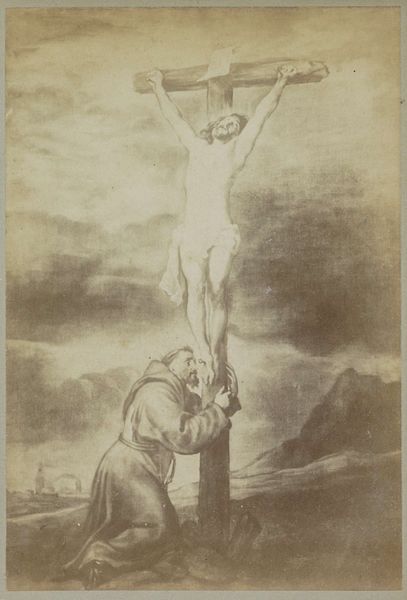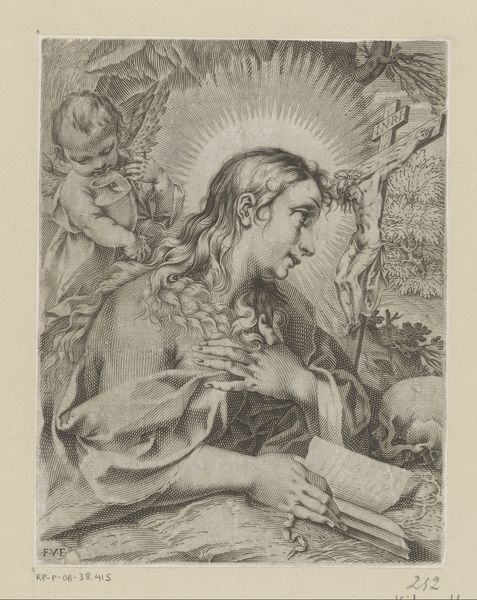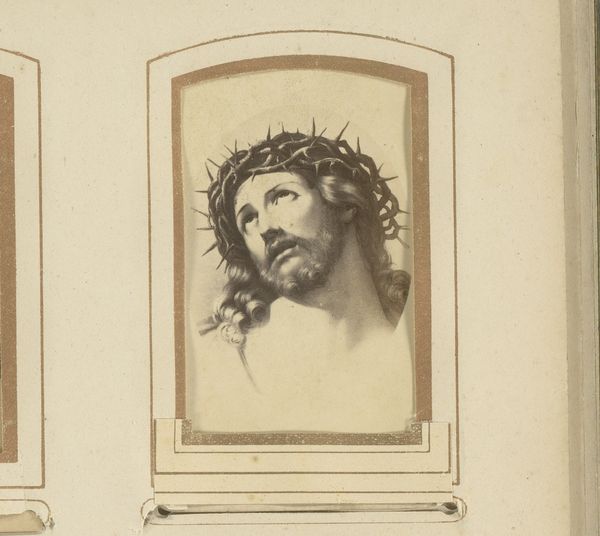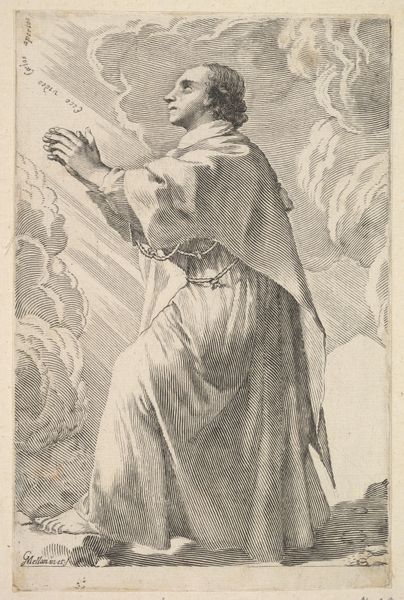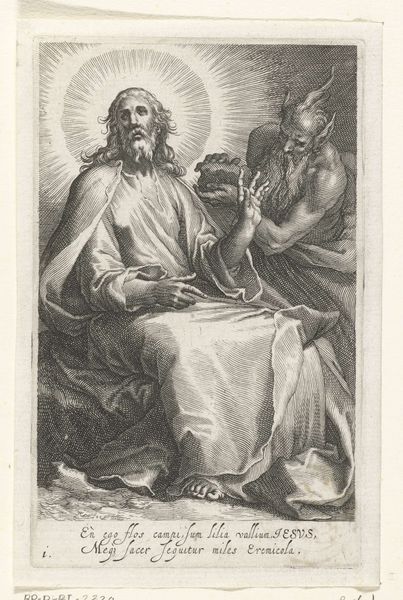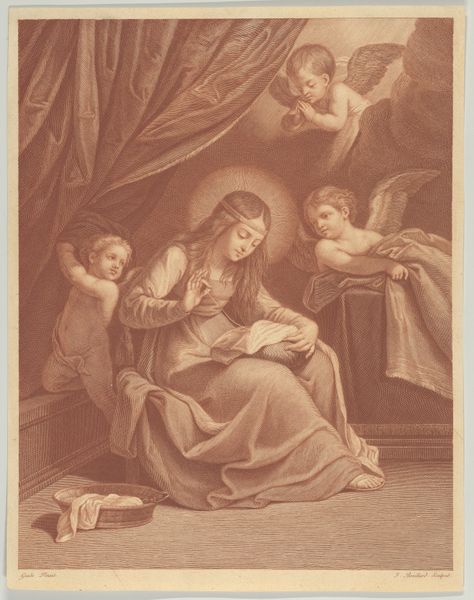
Fotoreproductie van (vermoedelijk) een prent naar een schilderij van Ary Scheffer c. 1850 - 1870
0:00
0:00
print, photography
#
portrait
#
toned paper
# print
#
photography
#
portrait drawing
#
history-painting
#
portrait art
Dimensions: height 139 mm, width 88 mm
Copyright: Rijks Museum: Open Domain
Editor: Here we have a photo reproduction of a print after Ary Scheffer, likely from the mid-19th century, featuring Mary Magdalene on the left, and Christ carrying the cross on the right. There’s a definite sense of drama and devotion in these paired portraits. What's particularly interesting is the almost sentimental aesthetic. What do you make of this piece, considering the time it was made? Curator: Well, seeing these sentimentalized religious images in a photographic reproduction speaks volumes about the democratisation of art in the 19th century. Ary Scheffer was highly celebrated in his day, often lauded for imbuing historical and religious scenes with emotional accessibility. This print allows broader audiences to engage with such sentimentality. Who do you think was consuming these images? Editor: Presumably a middle-class audience, given photography's growing accessibility. So, the piece is functioning almost as a devotional object within a domestic setting? Curator: Precisely. Consider the social climate: the rise of industrialisation, the growth of cities, and the shifting societal norms. Art, like this reproduction, provides a sense of comfort and moral guidance. It domesticates powerful religious narratives, making them consumable and easily circulated. Editor: It’s like these powerful images are mass-produced for the moral edification of a growing middle class. It feels less like high art and more like social instruction through imagery. Curator: Indeed. It reveals how art functioned as a tool in shaping social values and disseminating dominant ideologies. The 'truthfulness' associated with photography only serves to reinforce the intended effect of these devotional scenes. What does considering its public role do to your impression? Editor: It makes me view it more critically, understanding the piece is communicating particular values to a specific audience rather than simply being an aesthetic representation. Curator: Exactly. Reflecting on such pieces lets us think critically about how cultural values get constructed and promoted, particularly in an age of increased visual reproduction.
Comments
No comments
Be the first to comment and join the conversation on the ultimate creative platform.

